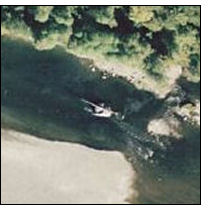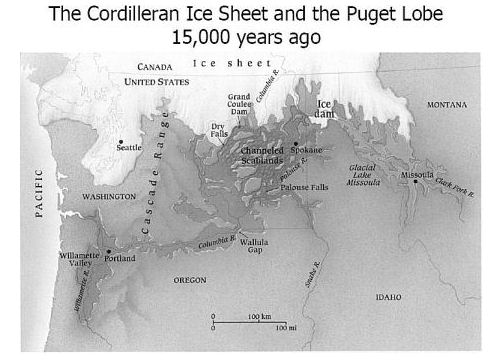I Love the Stilly #7 - Big Rock EarthCache
I Love the Stilly #7 - Big Rock
-
Difficulty:
-

-
Terrain:
-

Size:  (other)
(other)
Please note Use of geocaching.com services is subject to the terms and conditions
in our disclaimer.
Erratic (glacial): Large rocks or other debris deposited by a glacier, usually in an area far removed from its source. Commonly used to indicate a big chunk of debris which is clearly out of place and shouldn't even be where it is.

 Very nearly in my own back yard, Big Rock is a well-known local landmark. For well over 100 years (and probably much longer than that), it has been a gathering place for those of us who live here, as evidenced by the park you’re currently standing in to view it. Because Big Rock sits in the middle of the Stillaquamish River, you might think that a massive flood pushed it here, but that is not the case.
Very nearly in my own back yard, Big Rock is a well-known local landmark. For well over 100 years (and probably much longer than that), it has been a gathering place for those of us who live here, as evidenced by the park you’re currently standing in to view it. Because Big Rock sits in the middle of the Stillaquamish River, you might think that a massive flood pushed it here, but that is not the case.
Frequently called the Ice Age, the Pleistocene Epoch began a little over 2 million years ago. It consisted of many glacial stades (the advance and retreat of a glacier), interspersed with warmer interglacial periods. Scientific evidence suggests that over the past 1.5 million years, there could have been as many as 20 glacial stades. Big Rock was left here by the last glacial stade, the Vashon Stade. During the Vashon Stade, the margin of the Cordilleran Ice Sheet crept south into northwestern Washington. As it reached the Olympic Mountains, it divided into two lobes, one of which, the Puget Lobe, flowed south into the Puget Lowland between the Olympic Mountains and the Cascade Range.
Somewhere along the way, possibly as far away as what is now British Columbia, Big Rock became a part of the glacier, by either dropping on what became the Puget Lobe of the Cordilleran Ice Sheet, or by being picked up by the ice as it scoured its way past, heading south at the speed of about 300 feet per year. When the ice stopped advancing and began melting, Big Rock was over its final resting place, which eventually became the middle of the Stilliguamish River. There it has been for the past 10,000 years or so.
Big Rock is a large glacial erratic. Glacial erratics can range in size from small pebbles to huge boulders, and are dissimilar in size and composition to the rocks around it. Glacial erratics are useful indicators of ancient ice movement and distances of transport, providing enticing glimpses into the ancient geological history of our area.
To log this earthcache: Please email me answers to the questions below on the same day that you log your successful find of this earthcache. Do not include the answers in your online log. Online logs without the answers emailed to me on the same day risk deletion. If you are concerned that there could be an issue, save your answers in the "Personal Cache Note" section near the top of the cache page. (That might be good general practice, anyway.)
- Travel to the posted coordinates and look roughly NNW to see Big Rock.
- Estimate the size and weight of Big Rock. In your opinion, did it drop onto the moving ice, or was it picked up by it? Why do you think that? (Binoculars might be of use here.)
- E-mail me with the answers to these questions. Do not include them in your log, or it will be deleted.
- Log your find of this earthcache online. Photos are no longer allowed to be required for earthcaches, but I would love to see your photos from your visit. However, if your answers to the above questions are incorrect, a posted photo of yourself at the earthcache site with your log may be the only thing that might keep your log from being deleted.
Other things to know:
- You may not want to bring your best car here. The potholes have been known to grow big enough to swallow a VW Bug!
- There are parking fees here, in for form of a Vehicle Use Permit. Vehicle Use Permits may designate up to two vehicles for use. A Vehicle Use Permit is not the same as a Northwest Forest Pass. As use has increased, so has the routine maintenance burden at these access sites. They are targets for illegal dumping and vandalism. The law specifies that this revenue be spent on these problems.
- Vandalism has been a problem here, so keep your car locked with valuables out of site, or keep your car in view.
Additional Hints
(No hints available.)